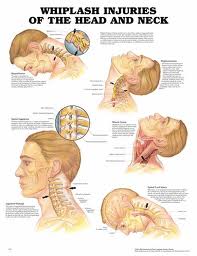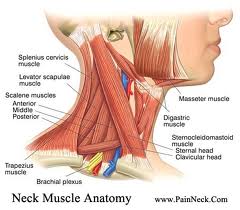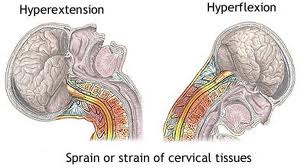MN Chiropractor
Whiplash is a neck and spinal injury most commonly caused by a rear-end car collision. Generally, the driver and passengers in the vehicle that was hit from behind sustain the whiplash injury. But occupants in the other vehicle might also sustain a similar injury, although it is technically not whiplash.
The impact of a rear-end collision will force the neck and head to whip back and forth suddenly, stretching the body beyond its normal range of movement.
If you have been involved in a car accident, whiplash injuries need to be taken very seriously. Because symptoms of a whiplash injury can take weeks or months to manifest, it is easy to be fooled into thinking that you are not as injured as you really are. Symptoms from a car accident injury and whiplash may include radiating pain into the shoulder, elbow pain, wrist pain or hand pain, low back pain, headaches and more.
In whiplash research, many articles that conflict or contradict each other. Most whiplash symptoms develop within 24 hours of the injury and may include:
- Neck pain and stiffness
- Headaches, most commonly at the base of the skull
- Dizziness
- Blurred vision
- Fatigue
Some people also experience:
- Difficulty concentrating
- Memory problems
- Ringing in the ears
- Sleep disturbances
- Irritability
The goal of this is to discuss the “truth” about whiplash.
- It is more common to have a delay in the onset of whiplash symptoms. Symptoms may start about two hours after the initial injury or it may take days, weeks, or months before you feel anything.
- For whiplash caused by car accidents, the severity depends on the force of the
 impact, the way you were seated in your car, and if you were properly restrained using a shoulder and seat belt.
impact, the way you were seated in your car, and if you were properly restrained using a shoulder and seat belt. - Tests show the soft tissues in your neck sustain injury at a threshold of 5 mph. That means if you are rear-ended at 5 mph or slower, you have a lower chance of getting whiplash. However, most rear-end car accidents happen at speeds of 6-12 mph.
- If you have been in a car accident, it is a good idea to evaluate even if your car not damaged and you do not feel any pain.
- Although whiplash is most often associated with car accidents, you can also get whiplash from sports such as snowboarding, boxing, football and gymnastics.
- The concept of “no car damage = no injury” is false. Most cars can withstand
 collisions of up to 10 MPH and as pointed out above, only in collisions < 5 MPH are you less likely to be injured. Collisions that occur between 6-12 MPH cause the highest percentage of whiplash injuries (which is below the threshold of car damage in most cases). In addition, the energy of the impact transferred to the contents inside the car when there is no vehicular damage (that means you).
collisions of up to 10 MPH and as pointed out above, only in collisions < 5 MPH are you less likely to be injured. Collisions that occur between 6-12 MPH cause the highest percentage of whiplash injuries (which is below the threshold of car damage in most cases). In addition, the energy of the impact transferred to the contents inside the car when there is no vehicular damage (that means you). - Mild traumatic brain injury (MTBI) can occur in motor vehicle collisions even if the
 head does not hit an object inside the car, although it is more common when there is a head strike. The symptoms associated with MTBI referred to as “Post Concussive Syndrome.”
head does not hit an object inside the car, although it is more common when there is a head strike. The symptoms associated with MTBI referred to as “Post Concussive Syndrome.” - Approximately 10% of whiplash injured patients become very disabled.
- Of the studies published since 1995, over 60% of whiplash patients required long-term medical care.
- Risk factors for long-term symptoms associated with WAD include: rear impacts, loss of the cervical lordosis curve, pre-existing degenerative arthritis, use of seat belts & shoulder harness (low speed impacts only), poor head restraint position or shape, non-awareness of the impending collision, female (especially long slender neck), head rotation at impact.
If you or someone you know has been involved in an accident or had a recent Sport Related injury, I urge you to call your Minnesota Chiropractic today.





